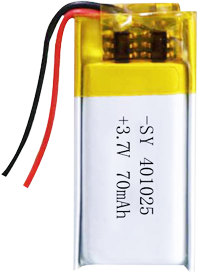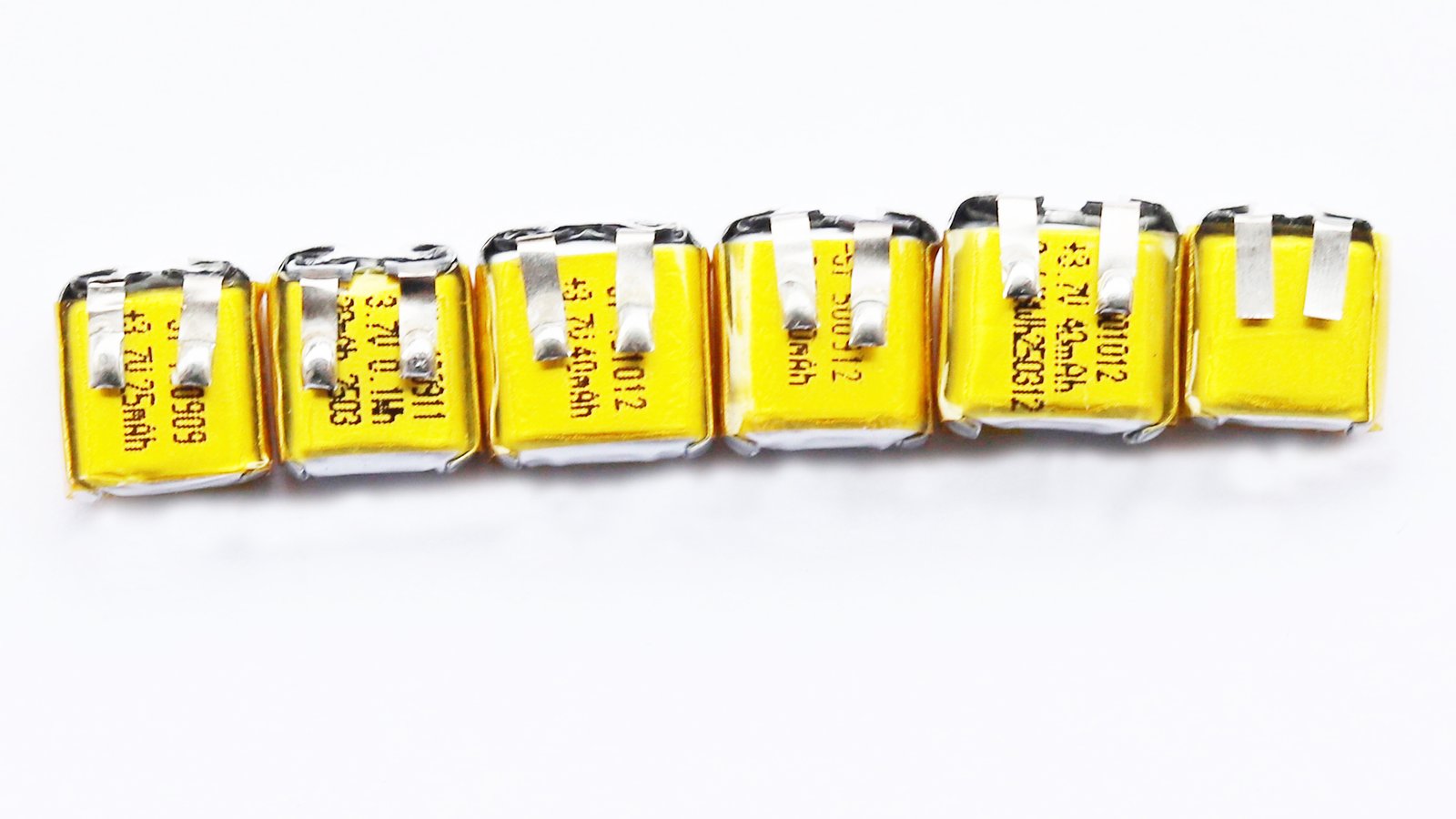LiPo batteries are everywhere—but most people don’t even realize how much they depend on them every day.
Lithium polymer batteries1 are used in electronics, vehicles, drones, medical devices, and more—thanks to their high energy density2, flexible shape, and lightweight design3.

From tiny wearables4 to full-size electric cars5, these batteries are driving the future of portable energy6. I use them in nearly every project I work on. Here’s where and why they matter.
Table of Contents
ToggleWhat Makes LiPo Batteries Suitable for So Many Devices?
They're powerful, light, and moldable—and that's just the start.
The key features that make lithium polymer batteries so useful are their high energy-to-weight ratio7, flexible packaging8, and ability to be customized to any form factor9.

🔍 What Makes Them Unique?
| Feature | Benefit |
|---|---|
| High energy density10 | Long battery life in small sizes |
| Thin & flexible shape11 | Easy to fit into compact or curved device designs |
| Lightweight | Reduces total product weight |
| Low self-discharge12 | Holds charge longer when not in use |
| Fast discharge | Supports power-hungry operations like motors |
| Safe construction | Gel/solid electrolyte reduces leak risk |
These traits allow LiPo batteries13 to outperform other types like nickel-cadmium14 or even traditional lithium-ion15 in many portable and high-demand applications.
Where Are LiPo Batteries Used in Consumer Electronics?
Every screen you swipe likely runs on one.
In smartphones, tablets, laptops, and wearables, lithium polymer batteries power slim, lightweight devices with long runtime and safety features.

📱 Key Electronics That Use LiPo
- Smartphones
- Tablets
- Bluetooth headphones
- Smartwatches
- Laptops and ultrabooks
- Portable gaming devices
Because of their slim profile and low weight, LiPo cells enable modern design trends like foldable phones and edge-to-edge screens. I’ve personally replaced LiPo packs in more than 30 tablets, and it still amazes me how much power fits in such a small package.
How Do Electric Vehicles Use LiPo Batteries?
LiPo isn’t just for tiny gadgets—it scales to vehicles too.
Electric vehicles use lithium polymer battery packs to achieve high energy output, fast acceleration, and improved range due to their compact and lightweight design.

🚗 Why EVs Prefer LiPo (in some cases)
- High energy density = longer range
- Faster charging possible with advanced BMS
- Safety under thermal pressure
- Custom pack layouts for underfloor or chassis fitting
While Li-ion is still more common in large EVs due to energy density/cost ratios, LiPo is frequently used in electric motorcycles, scooters, e-bikes, and high-performance EV prototypes.
Why Are LiPo Batteries Ideal for Drones and RC Models?
When weight matters, LiPo wins every time.
LiPo batteries are essential in drones and RC vehicles because they deliver high current output with low weight, supporting longer flight time and faster speeds.

🚁 Key Applications
- Hobby drones & FPV racing
- Commercial UAVs (mapping, surveillance)
- RC cars, boats, planes
LiPo packs provide the necessary burst of energy during takeoff or sudden turns. I use 4S and 6S LiPo packs for my quadcopters, and their consistent voltage under load makes a big difference during aggressive flying.
How Are LiPo Batteries Used in Medical Devices?
Health tech relies on silent, steady power.
In medical wearables, implants, and portable monitors, LiPo batteries offer compact size, lightweight, and reliability—ensuring uninterrupted patient support.

🏥 Critical Uses
- Hearing aids
- Insulin pumps
- Portable ECG monitors
- Patient tracking and telemetry devices
- Surgical tools and handheld diagnostics
Doctors and hospitals favor LiPo because the batteries are safe, stable, and last long between charges. Their shape adaptability allows ergonomic and minimally invasive designs.
Can LiPo Batteries Support Renewable Energy Storage?
Yes—but at a different scale.
For small-scale off-grid systems, solar lighting, or remote sensors, LiPo batteries provide compact and efficient energy storage with low maintenance.

🌞 Renewable Use Cases
| Application | Why LiPo Works |
|---|---|
| Portable solar banks | Lightweight, high capacity |
| Solar garden lights | Long runtime in compact housing |
| Remote IoT sensors | Low discharge, dependable in harsh zones |
| Small off-grid kits | Easy installation and modular wiring |
They’re not ideal for grid-scale storage, but for DIY solar16, field sensors, or mobile solar kits17, LiPo cells are a smart option.
Are There Industrial and Military Uses?
Absolutely—especially when performance and reliability can’t be compromised.
In robotics, aerospace, and tactical equipment, LiPo batteries are chosen for their high power-to-weight ratio and safety under extreme conditions.

🛠️ Sectors and Tools
- Autonomous robots (indoor or field)
- Tactical drones for defense
- Satellite instruments
- Battery-powered tools in confined or mobile use
Engineers love the ability to design around the battery rather than be limited by its shape. I’ve seen LiPo used in underwater robots and wearable exosuits—where weight savings translate to real-world endurance and functionality.
What’s Next for LiPo Battery Applications?
Smarter, thinner, and longer-lasting tech is on the horizon.
Emerging LiPo innovations include flexible electronics, bendable medical patches, and ultra-thin batteries integrated into clothing, screens, and sensors.

🔮 Trends to Watch
- Wearable health monitoring patches
- Flexible display and e-ink devices
- Smart textiles and battery-powered clothing
- Transparent LiPo cells for smart glass
As the Internet of Things expands and wearables get smarter, LiPo batteries will evolve to power these connected experiences—with better safety, faster charging, and even more form factor freedom.
Conclusion
From smartphones to satellites, lithium polymer batteries are shaping the present—and charging the future—with power that's light, flexible, and built to adapt.
-
Explore the benefits of Lithium polymer batteries to understand why they are preferred in various applications. ↩
-
Learn about high energy density in batteries and its significance in performance and efficiency. ↩
-
Discover the importance of lightweight design in battery technology and its impact on device performance. ↩
-
Discover how tiny wearables are revolutionizing personal technology and enhancing everyday experiences through innovative designs. ↩
-
This resource will provide insights into the workings of electric cars and their environmental benefits, crucial for future innovations. ↩
-
Exploring this link will deepen your understanding of portable energy and its significance in modern technology. ↩
-
Understanding the energy-to-weight ratio can help you appreciate why lithium polymer batteries are preferred in various applications, from drones to smartphones. ↩
-
Exploring flexible packaging will reveal how it enhances the design and application of lithium polymer batteries in modern technology. ↩
-
Learning about customization options can provide insights into how lithium polymer batteries can meet specific needs in diverse devices. ↩
-
Explore how high energy density batteries can enhance device performance and longevity, making them ideal for modern technology. ↩
-
Discover the transformative effects of thin and flexible batteries on device aesthetics and functionality, enabling innovative designs. ↩
-
Learn about the significance of low self-discharge rates in batteries, ensuring devices remain ready for use when needed. ↩
-
Explore this link to understand why LiPo batteries are preferred for high-demand applications, enhancing your knowledge on battery technology. ↩
-
Learn about the drawbacks of nickel-cadmium batteries to see why alternatives like LiPo are often favored. ↩
-
Discover the differences between traditional lithium-ion and LiPo batteries to make informed choices for your needs. ↩
-
Exploring this link will provide insights into the advantages and potential of DIY solar projects, enhancing your understanding of renewable energy options. ↩
-
Discovering the top mobile solar kits can guide you in choosing the right portable solar solutions for your needs, making energy access easier. ↩

